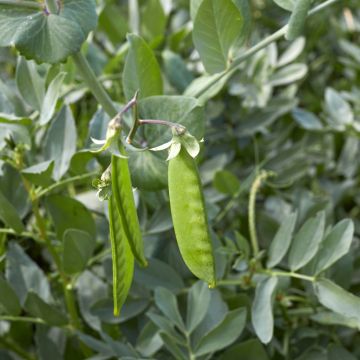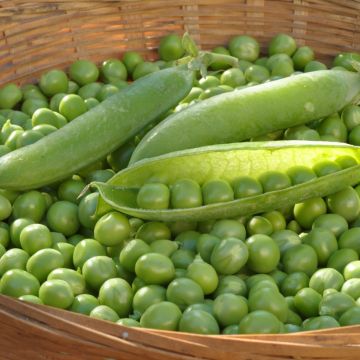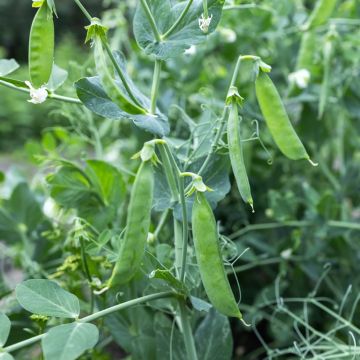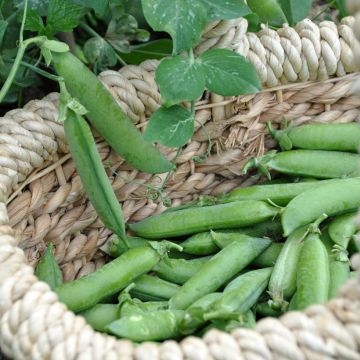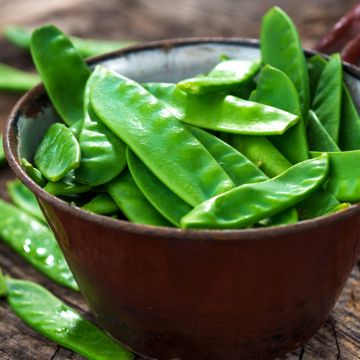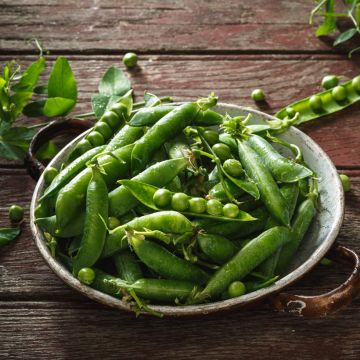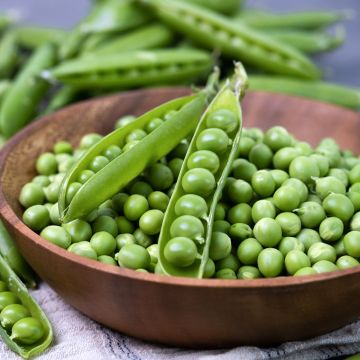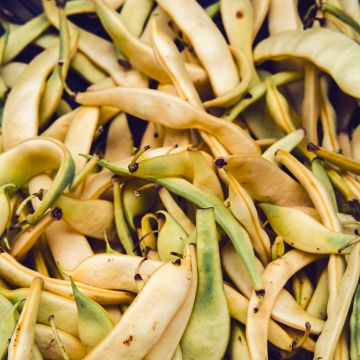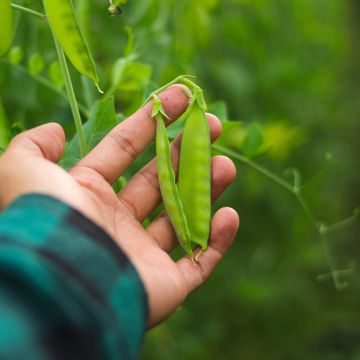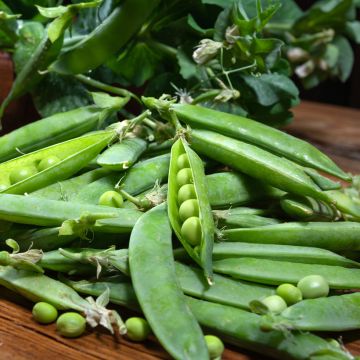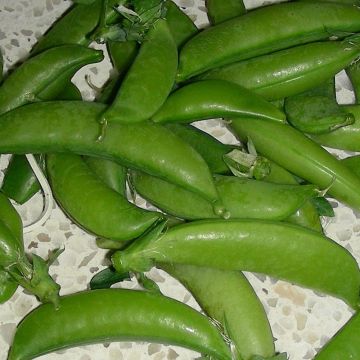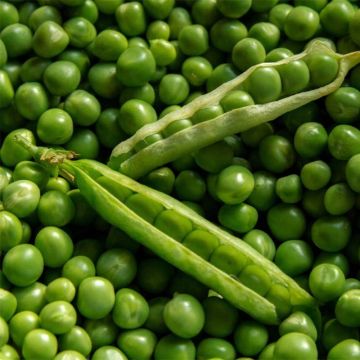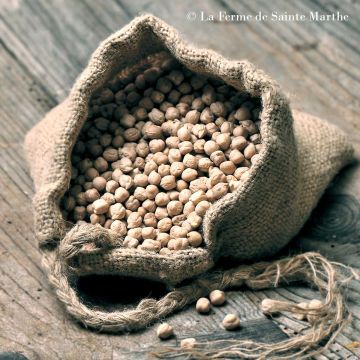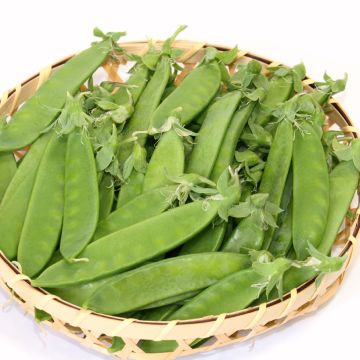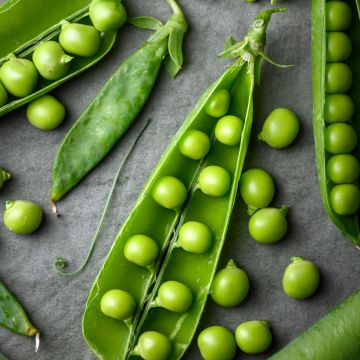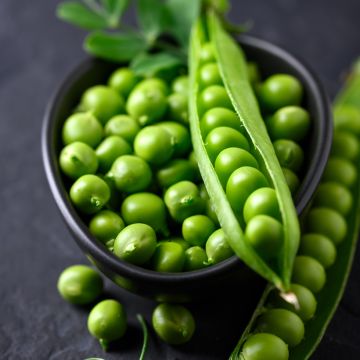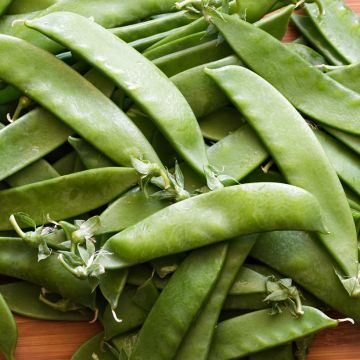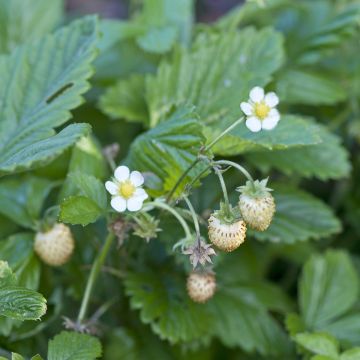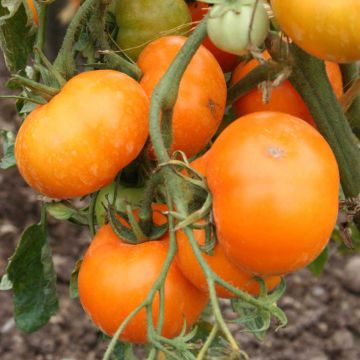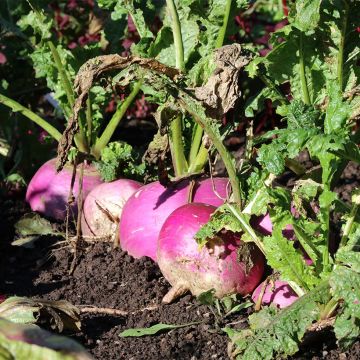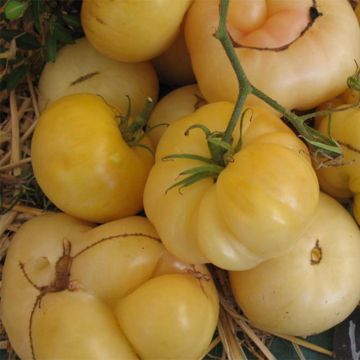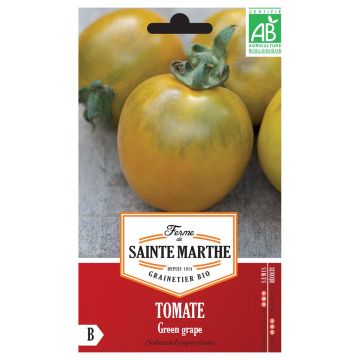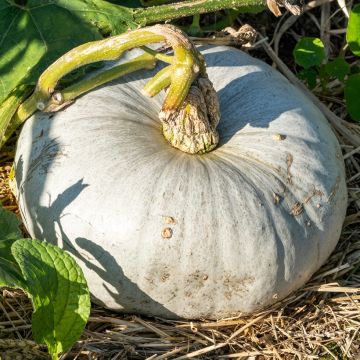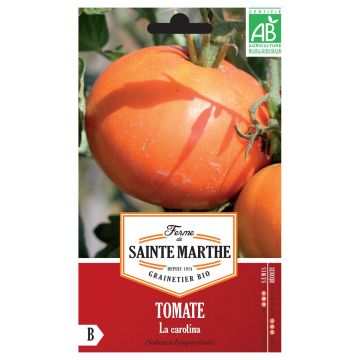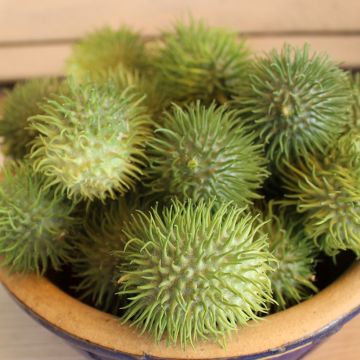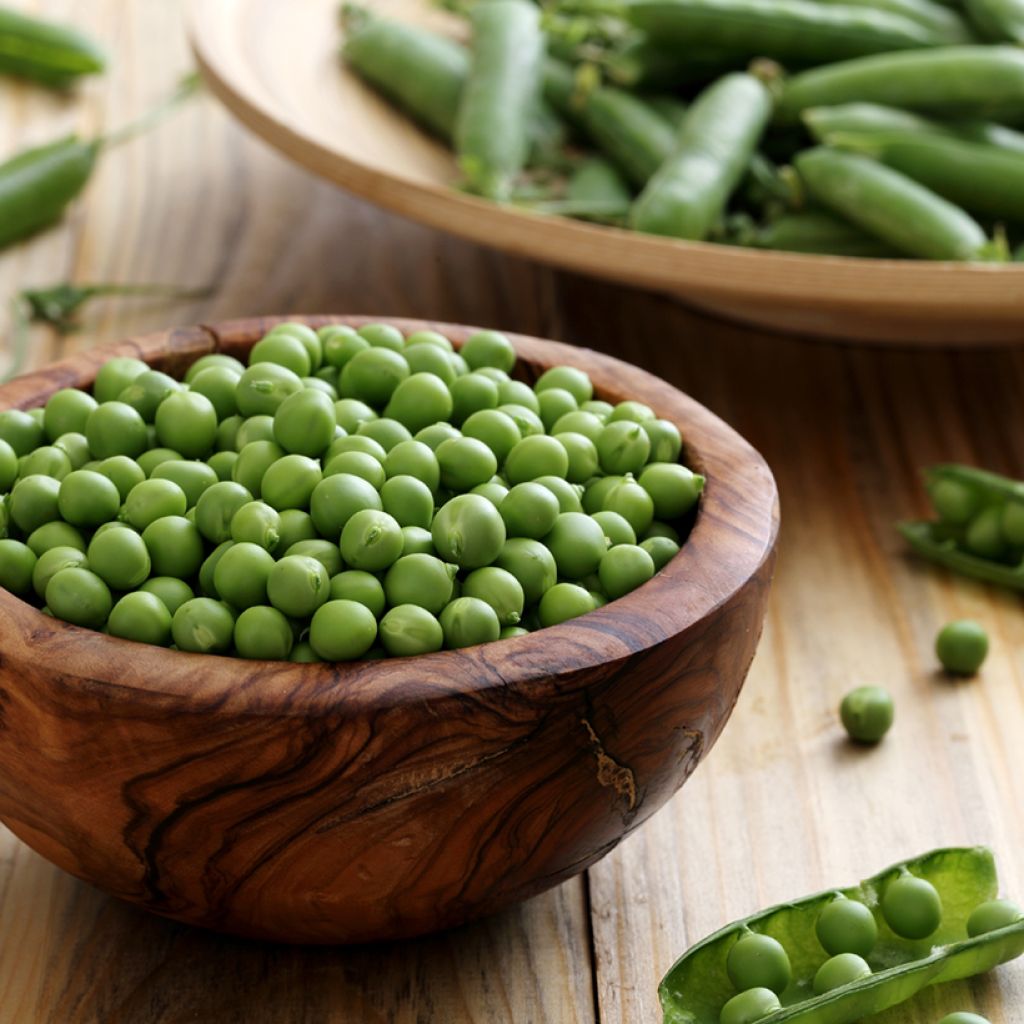

Express Climbing Peas with long pods (The Generous) - Vilmorin seeds
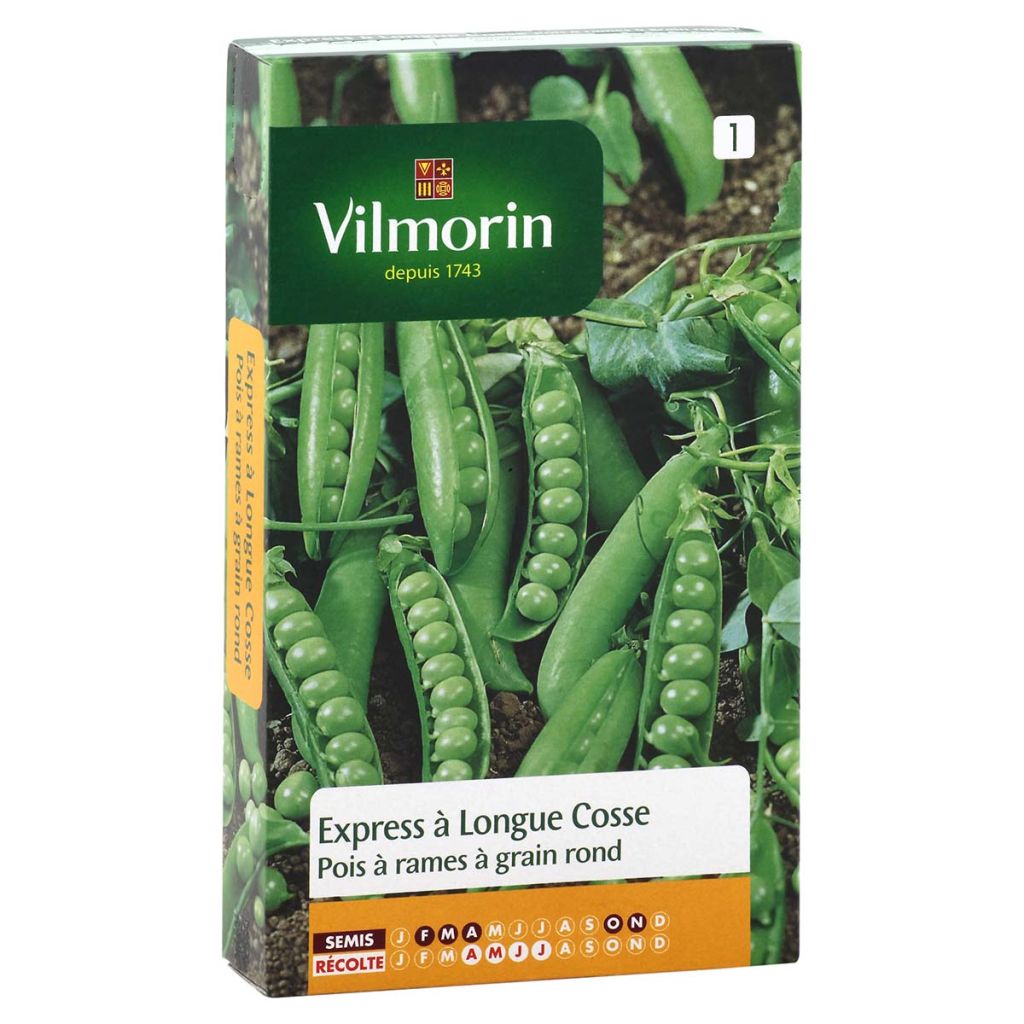

Express Climbing Peas with long pods (The Generous) - Vilmorin seeds
Express Climbing Peas with long pods (The Generous) - Vilmorin seeds
Pisum sativum Express
Garden pea, Green pea, English pea
Very good yield for a spring harvest
alain, 03/05/2020
Special offer!
Receive a €20 voucher for any order over €90 (excluding delivery costs, credit notes, and plastic-free options)!
1- Add your favorite plants to your cart.
2- Once you have reached €90, confirm your order (you can even choose the delivery date!).
3- As soon as your order is shipped, you will receive an email containing your voucher code, valid for 3 months (90 days).
Your voucher is unique and can only be used once, for any order with a minimum value of €20, excluding delivery costs.
Can be combined with other current offers, non-divisible and non-refundable.
Why not try an alternative variety in stock?
View all →This plant carries a 6 months recovery warranty
More information
We guarantee the quality of our plants for a full growing cycle, and will replace at our expense any plant that fails to recover under normal climatic and planting conditions.
Description
The Express long pod Climbing Pea, also known as the Generous Pea, is a variety of climbing shelling pea that reaches over 1.40 m (5ft) in height. It produces slightly curved pods containing 7 to 9 round and smooth peas. This pea is highly recommended for freezing and canning. It is very productive and early, with harvests from April to July.
The Pea is an annual vegetable belonging to the Legume family (formerly known as Fabaceae) with ancient origins in the Near East. It is one of the oldest cultivated vegetables in Europe and Asia. It was traditionally consumed dry and crushed before cooking and its fresh consumption is relatively recent.
There are numerous varieties of dwarf or climbing peas that produce pods filled with smooth or wrinkled round peas. They are cooked after shelling as the papery pod in which they are enclosed is not edible. Only sugar snap peas (with flat pods, crunchy and buttery) are consumed in their entirety.
In general, climbing peas are more productive but later and need a structure 1.5 to 2 metres (5 to 7 feet) tall for them to climb. They are easy to harvest. Dwarf or semi-dwarf peas suffice with a few branches (from 50 cm (20in) to 1 metre (3 feet)) as supports. Some recent varieties, with most of their foliage replaced by tendrils, are self-supporting, and the use of supports is optional.
Smooth-grained peas are resistant to spring cold. They are very early or early varieties that can be sown very early under a tunnel, for example, but they do not like excessive heat.
For late spring and early summer sowings, wrinkled-grained varieties with a sweeter flavour are used. They tolerate heat and offer longer harvests.
Peas are highly appreciated in spring, but with careful variety selection, they can be harvested over a long period from June to September.
In cooking, peas can be consumed raw, but they are traditionally cooked to accompany meat and fish or to prepare delicious soups. They are quite calorie-rich as they are rich in carbohydrates, and they also contain a lot of fibre, iron, and vitamins C and B9.
Peas like mild and humid climates but are sensitive to extreme weather conditions such as high heat, frost, and both water shortage and excess, which weaken them and make them susceptible to powdery mildew and the pea moth, a small caterpillar that eats the peas.
Harvest: Depending on the variety, peas are harvested between two and a half to four months after sowing. Pick regularly when the pods feel firm under finger pressure. Don't wait too long... peas tend to harden as they age!
Storage: Fresh peas can be stored, unshelled, in the vegetable drawer of the refrigerator. They freeze very well once blanched in boiling water.
Gardener's Tip: Peas, like all legumes, can fix atmospheric nitrogen in the soil, acting as a green fertiliser. This nitrogen supply benefits plants growing nearby and those that will be planted subsequently in a crop rotation system.
Harvest
Plant habit
Foliage
Botanical data
Pisum
sativum
Express
Fabaceae
Garden pea, Green pea, English pea
Cultivar or hybrid
Annual
Other Pea seeds
View all →Planting and care
Sowing
Before sowing, you can soak the seeds in a little water for 24 hours to stimulate germination.
For wrinkled grain varieties, you can sow from mid-March to the end of May, when the temperature is 7 to 10°C (44.6 to 50°F) at night and 18 to 23°C (64.4 to 73.4°F) during the day.
For smooth grain varieties, you can sow in autumn around October-November for an early harvest in April, or sow around mid-February to the end of April for a summer harvest. Even though this variety can germinate in cold weather, it is a good idea to protect the seedlings with a tunnel that will create a microclimate favourable for even germination, and protect the young plants from birds.
Using a hoe, open furrows 2 or 3 cm (1in) deep spaced 70 cm (28in) apart for this climbing pea variety. Space the seeds 2 cm (1in) apart, cover, press down with the back of the rake, and water with a fine spray. Do not thin out.
Watering
A few days after germination, hoe the soil along the rows. Water with a watering can fitted with a rose to avoid compacting the soil.
When the plants are well established, mulch the soil after a rainy period.
Do not let the soil dry out, as peas appreciate moisture. It needs regular moisture from sowing to flowering and pod formation. If there is water stress, production is affected. The flowers drop and the pods do not ripen. The same happens with excess water, the flowers fall. Maintaining adequate moisture helps limit thrips infestations.
Maintenance
Three to four weeks after seed germination, carefully hoe and bury the base of the stems to about 10 cm (4in) to promote better root growth. Then, set up the supports, such as branches (willow, hazelnut, privet...), netting or trellises, even for dwarf varieties so that they do not collapse. the supports will need to be taller or shorter, depending on the varieties, climbing peas can grow up to 2 m (7ft).
Seedlings
Care
Intended location
Planting & care advice
-
, onOrder confirmed
Reply from on Promesse de fleurs
Similar products
Haven't found what you were looking for?
Hardiness is the lowest winter temperature a plant can endure without suffering serious damage or even dying. However, hardiness is affected by location (a sheltered area, such as a patio), protection (winter cover) and soil type (hardiness is improved by well-drained soil).

Photo Sharing Terms & Conditions
In order to encourage gardeners to interact and share their experiences, Promesse de fleurs offers various media enabling content to be uploaded onto its Site - in particular via the ‘Photo sharing’ module.
The User agrees to refrain from:
- Posting any content that is illegal, prejudicial, insulting, racist, inciteful to hatred, revisionist, contrary to public decency, that infringes on privacy or on the privacy rights of third parties, in particular the publicity rights of persons and goods, intellectual property rights, or the right to privacy.
- Submitting content on behalf of a third party;
- Impersonate the identity of a third party and/or publish any personal information about a third party;
In general, the User undertakes to refrain from any unethical behaviour.
All Content (in particular text, comments, files, images, photos, videos, creative works, etc.), which may be subject to property or intellectual property rights, image or other private rights, shall remain the property of the User, subject to the limited rights granted by the terms of the licence granted by Promesse de fleurs as stated below. Users are at liberty to publish or not to publish such Content on the Site, notably via the ‘Photo Sharing’ facility, and accept that this Content shall be made public and freely accessible, notably on the Internet.
Users further acknowledge, undertake to have ,and guarantee that they hold all necessary rights and permissions to publish such material on the Site, in particular with regard to the legislation in force pertaining to any privacy, property, intellectual property, image, or contractual rights, or rights of any other nature. By publishing such Content on the Site, Users acknowledge accepting full liability as publishers of the Content within the meaning of the law, and grant Promesse de fleurs, free of charge, an inclusive, worldwide licence for the said Content for the entire duration of its publication, including all reproduction, representation, up/downloading, displaying, performing, transmission, and storage rights.
Users also grant permission for their name to be linked to the Content and accept that this link may not always be made available.
By engaging in posting material, Users consent to their Content becoming automatically accessible on the Internet, in particular on other sites and/or blogs and/or web pages of the Promesse de fleurs site, including in particular social pages and the Promesse de fleurs catalogue.
Users may secure the removal of entrusted content free of charge by issuing a simple request via our contact form.
The flowering period indicated on our website applies to countries and regions located in USDA zone 8 (France, the United Kingdom, Ireland, the Netherlands, etc.)
It will vary according to where you live:
- In zones 9 to 10 (Italy, Spain, Greece, etc.), flowering will occur about 2 to 4 weeks earlier.
- In zones 6 to 7 (Germany, Poland, Slovenia, and lower mountainous regions), flowering will be delayed by 2 to 3 weeks.
- In zone 5 (Central Europe, Scandinavia), blooming will be delayed by 3 to 5 weeks.
In temperate climates, pruning of spring-flowering shrubs (forsythia, spireas, etc.) should be done just after flowering.
Pruning of summer-flowering shrubs (Indian Lilac, Perovskia, etc.) can be done in winter or spring.
In cold regions as well as with frost-sensitive plants, avoid pruning too early when severe frosts may still occur.
The planting period indicated on our website applies to countries and regions located in USDA zone 8 (France, United Kingdom, Ireland, Netherlands).
It will vary according to where you live:
- In Mediterranean zones (Marseille, Madrid, Milan, etc.), autumn and winter are the best planting periods.
- In continental zones (Strasbourg, Munich, Vienna, etc.), delay planting by 2 to 3 weeks in spring and bring it forward by 2 to 4 weeks in autumn.
- In mountainous regions (the Alps, Pyrenees, Carpathians, etc.), it is best to plant in late spring (May-June) or late summer (August-September).
The harvesting period indicated on our website applies to countries and regions in USDA zone 8 (France, England, Ireland, the Netherlands).
In colder areas (Scandinavia, Poland, Austria...) fruit and vegetable harvests are likely to be delayed by 3-4 weeks.
In warmer areas (Italy, Spain, Greece, etc.), harvesting will probably take place earlier, depending on weather conditions.
The sowing periods indicated on our website apply to countries and regions within USDA Zone 8 (France, UK, Ireland, Netherlands).
In colder areas (Scandinavia, Poland, Austria...), delay any outdoor sowing by 3-4 weeks, or sow under glass.
In warmer climes (Italy, Spain, Greece, etc.), bring outdoor sowing forward by a few weeks.






























